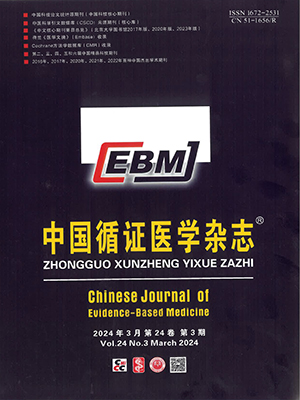| 1. |
Zijlstra F, de Boer MJ, Hoorntje JC, et al. A comparison of immediate coronary angioplasty with intravenous streptokinase in acute myocardial infarction. N Engl J Med, 1993, 328: 680-684.
|
| 2. |
Weaver WD, Simes RJ, Betriu A, et al. Comparison of primary coronary angioplasty and intravenous thrombolytic therapy for acute myocardial infarction: a quantitative review. JAMA, 1997, 278: 2093-2098.
|
| 3. |
Keeley EC, Boura JA, Grines CL. Primary angioplasty versus intravenous thrombolytic therapy for acute myocardial infarction: a quantitative review of 23 randomised trials. Lancet, 2003, 361: 13-20.
|
| 4. |
Abbo KM, Dooris M, Glazier S, et al. Features and outcome of no-reflow after percutaneous coronary intervention. Am J Cardiol, 1995, 75: 778-782.
|
| 5. |
Resnic FS, Wainstein M, Lee MK, et al. No-reflow is an independent predictor of death and myocardial infarction after percutaneous coronary intervention. Am Heart J, 2003, 145: 42-46.
|
| 6. |
Piana RN, Paik GY, Moscucci M, et al. Incidence and treatment of ’no-reflow’ after percutaneous coronary intervention. Circulation, 1994, 89: 2514-2518.
|
| 7. |
Mizote I, Ueda Y, Ohtani T, et al. Distal protection improved reperfusion and reduced left ventricular dysfunction in patients with acute myocardial infarction who had angioscopically defined ruptured plaque. Circulation, 2005, 1001-1007.
|
| 8. |
Laude K, Beauchamp P, Thuillez C, et al. Endothelial protective effects of preconditioning. Cardiovasc Res, 2002, 55: 466-473.
|
| 9. |
Kemper AJ, O’Boyle JE, Cohen CA, et al. Hydrogen peroxide contrast echocardiography: quantification in vivo of myocardial risk area during coronary occlusion and of the necrotic area remaining after myocardial reperfusion. Circulation, 1984, 70: 309-317.
|
| 10. |
Topol EJ, Yadav JS. Recognition of the importance of embolization in atherosclerotic vascular disease. Circulation, 2000, 101: 570-580.
|
| 11. |
Eeckhout E, Kern MJ. The coronary no-reflow phenomenon: a review of mechanisms and therapies. Eur Heart J, 2001, 22: 729-739.
|
| 12. |
Herrmann J. Peri-procedural myocardial injury: 2005 update. Eur Heart J, 2005, 26: 2493-2519.
|
| 13. |
Assali AR, Sdringola S, Ghani M, et al. Intracoronary adenosine administered during percutaneous intervention in acute myocardial infarction and reduction in the incidence of "no reflow" phenomenon. Catheter Cardiovasc Interv, 2000, 51: 27-31; discussion 32.
|
| 14. |
Marzilli M, Orsini E, Marraccini P, et al. Beneficial effects of intracoronary adenosine as an adjunct to primary angioplasty in acute myocardial infarction. Circulation, 2000, 101: 2154-2159.
|
| 15. |
Micari A, Belcik TA, Balcells EA, et al. Improvement in microvascular reflow and reduction of infarct size with adenosine in patients undergoing primary coronary stenting. Am J Cardiol, 2005, 96: 1410-1415.
|
| 16. |
Ross AM, Gibbons RJ, Stone GW, et al. A randomized, double-blinded, placebo-controlled multicenter trial of adenosine as an adjunct to reperfusion in the treatment of acute myocardial infarction (AMISTAD-II). J Am Coll Cardiol, 2005, 45: 1775-1780.
|
| 17. |
Cohen DJ, Murphy SA, Baim DS, et al. Cost-effectiveness of distal embolic protection for patients undergoing percutaneous intervention of saphenous vein bypass grafts: results from the SAFER trial. J Am Coll Cardiol, 2004, 44: 1801-1808.
|
| 18. |
范卫泽, 傅向华, 姜云发, 等. 冠状动脉内应用山莨菪碱对急性心肌梗死介入治疗后无再流及心室功能和收缩同步性的影响. 中华心血管病杂志, 2007, 27(4): 762-764.
|
| 19. |
陈金良, 傅向华, 范卫泽, 等. 冠脉内注射山莨菪碱及腺苷对急性心肌梗死患者介入治疗后缓再流现象的影响. 中华高血压杂志, 2008, 16(4): 340-343.
|
| 20. |
陈金良, 傅向华, 姜云发, 等. 乌拉地尔对急性前壁心肌梗死介入治疗后心肌无复流患者心室功能和收缩同步性的影响. 中国危重病急救杂志, 2008, 20(4): 197-199.
|
| 21. |
范卫泽, 傅向华, 谷新顺, 等. 冠状动脉内单用替罗非班与联合应用山莨菪碱对急性心肌梗死经皮冠状动脉介入治疗后无再流现象影响的对比研究. 临床心血管病杂志, 2007, 23(6):423-426.
|
| 22. |
危小军, 廖伟, 钟一鸣, 等. 应用尿激酶和(或)维拉帕米改善经皮冠脉介入治疗时无再流现象的疗效及安全性评价. 中国急救医学, 2006, 26(12):901-903.
|
| 23. |
汪蔚青, 金惠根, 蒋金法, 等. 尿激酶对直接经皮冠状动脉介人治疗术后无复流患者的疗效观察. 上海医学, 2006, 29(10): 711-714.
|
| 24. |
Vijayalakshmi K, Whittaker VJ, Kunadian B, et al. Prospective, randomised, controlled trial to study the effect of intracoronary injection of verapamil and adenosine on coronary blood flow during percutaneous coronary intervention in patients with acute coronary syndromes. Heart, 2006, 92: 1278-1284.
|
| 25. |
刘君, 傅向华, 马宁. 等. 急性心肌梗死经皮冠状动脉介入治疗后心肌灌注分级无再流现象对心室功能和收缩同步性的影响. 中华心血管病杂志, 2004, 32(10): 874-878.
|
| 26. |
韩艳丽, 陈玉国, 李贵双, 等. 小剂量尿激酶联合合贝爽冠状动脉内注射对PCI无再流现象疗效的临床评价. 中国中西医结合影像学杂志, 2003, 1(4): 209-214.
|
| 27. |
Parikh KH, Chag MC, Shah KJ, et al. Intracoronary boluses of adenosine and sodium nitroprusside in combination reverses slow/no-reflow during angioplasty: a clinical scenario of ischemic preconditioning. Canadian Journal of Physiology and Pharmacology, 2007, 85(3-4): 476-482.
|




